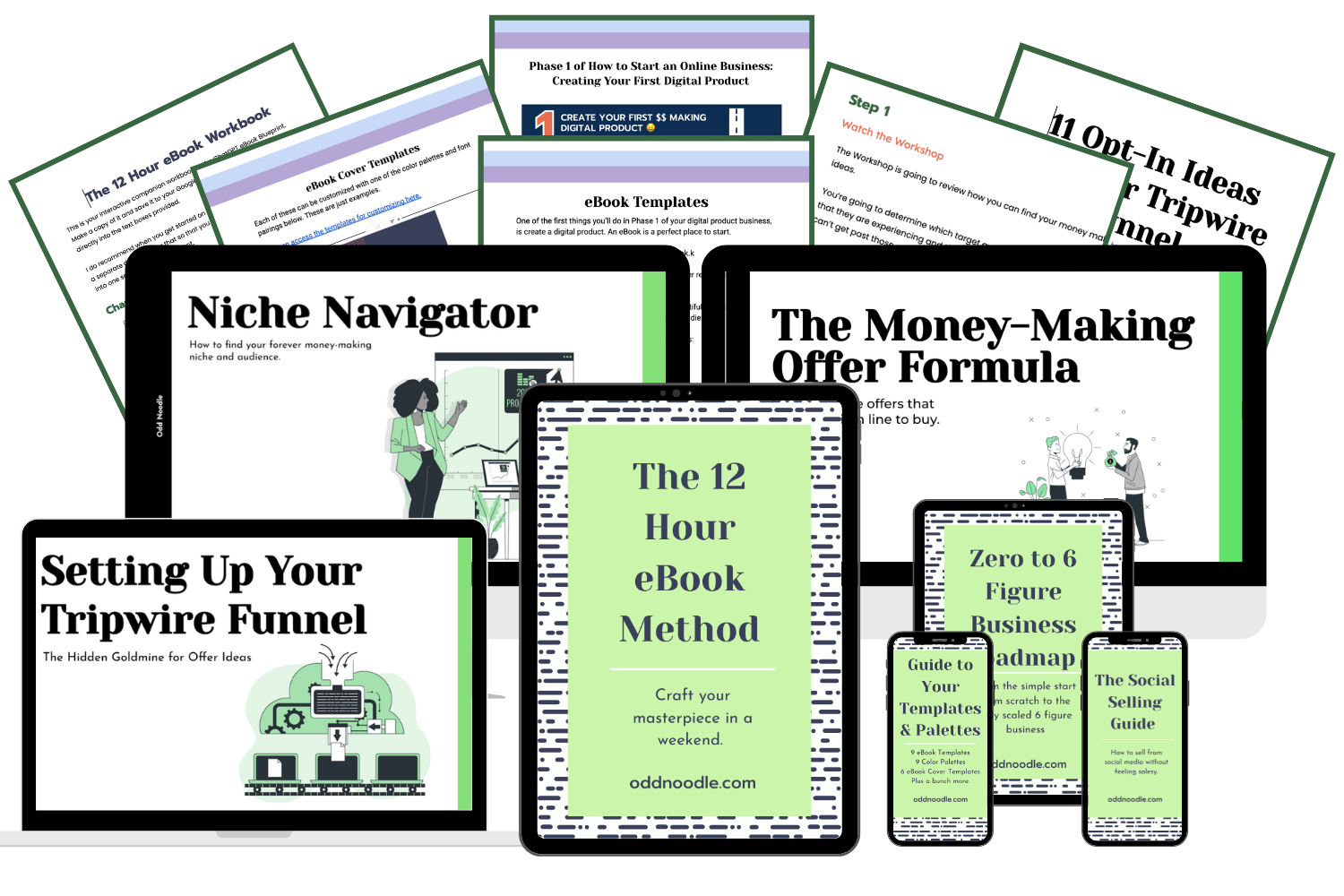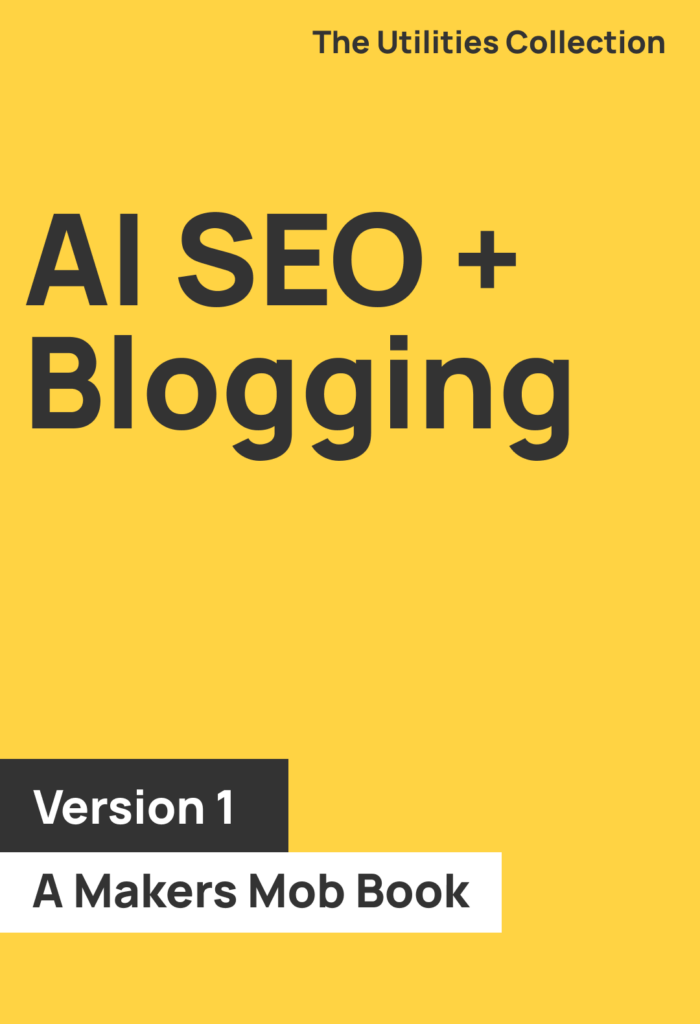I’d like to start this post about blogging mistakes by saying that if you’re not making any mistakes, you probably aren’t trying hard enough.
Mistakes are a step toward learning. It took me a very, very long time to understand that.
Very. Long.
I was so afraid of breaking some blogging rule, that I would stay in a very narrow lane of only what I already knew exactly how to do right and stuck with that.
When I mess up, I pat my chest and say “My bad”, fix whatever little mess I made, and carry on with my life.
So if you decide to skip all of what I have to say about the biggest blogging mistakes you could be making, at least remember that.
You’re not learning or growing without making some mistakes.
You won’t learn to trust yourself as a blogging business owner until you’ve made a few and then righted yourself.

The Blogging Mistakes We Aren’t Talking About
I’m going to go mostly off the beaten to death path and skip most of the technical mistakes that you might make when setting up your site.
Instead, we’re going to talk about the things that you really want to try to get right from the beginning so that you don’t find yourself wondering whether or not you should just start over in 6 months.
15 Mistakes We Don’t Want You To Make In The Beginning Because They Are Harder To Fix
15! Fifteen?
I was surprised that I could come up with that many, too, but I think you’ll find there is mostly an underlying theme to these common blogging mistakes.
And that is if you’re producing great content that helps your audience solve a problem, then almost every other blogging mistake is fixable.
So, let’s get started with the mistakes so you can go fix them and move on.
#1 Your site is making people run away before they even get to the third paragraph.
There is a very good reason this blogging mistake is listed at #1, but let me explain what I mean first.
When someone visits your site, probably from Pinterest, maybe from Google, what are they greeted with?
Are they greeted with a well laid out blog post with an easy reading experience, relevant images and lots of headings, lists or highlighted text to help carry them from one paragraph to the next?
Or, are they greeted with a pop-up for your Pinterest account, a header bar to sign up for your email list, a bunch of ads including a video ad that chases them down the screen as they scroll and paragraphs that are so long they are intimidating to read?
When someone clicks over to your site from Pinterest or Google, they have done so because they want to solve a problem they are having.
If they get to your site and they are overwhelmed by distractions, they will go back to where they came from and find something that is easier to read that will solve their problem.
You may have written the best guide to sleep training your baby ever written, but no one can finish reading it because there are too many distractions.
Start simple with your site design. We love GeneratePress for a great reading experience that puts your content first.
You don’t have to strip everything off of your site and go all text and minimal images (that’s just the style we like since we enjoy the focus being on the content). But you should be VERY mindful of every item that shows up on your post pages.
Do you really need those sharing buttons? What are they really doing for you?
Do you need a sign-up form at the top of your page and in your sidebar and in the middle of your post and at the end of the post?
Consider the reading experience first every time you decide to add something to the site and don’t forget to always check out how things look on desktop and mobile.
You want people reading, not running back to Pinterest for the next article.

#2 You chose a niche where people don’t spend money. (Or you chose no niche at all.)
There’s room for everything on the Internet. If you’re into it, you can find a site or a group or a forum for it.
But that does not mean that you can start a blog about anything at all and expect to make money with it.
If you chose a niche where people aren’t willing to spend money to improve themselves, then you are likely limited to ad revenue and maybe some affiliate sales.
It can also be more difficult to monetize a lifestyle blog that’s about a little bit of everything with anything other ad revenue.
With a lifestyle blog, when it comes time to create a product for your audience, it can be hard to write to one specific person about their specific problem when your blog is about everything.
Products might not be something you planned on, but at some point, if you want truly stable income and a business that can sustain you, then you will want to be able to offer your audience a product that you created.
There are four niche categories that you stand a really good chance of making money with:
- Love (relationships, dating, parenting)
- Money (personal finance, how to make money)
- Health (diet, exercise)
- Status (these are things like Bullet Journaling or Crafts where people will spend $$ on something they are passionate about)
We recommend starting with a topic that falls within one of those four big niche categories for the easiest road to success.
This might feel limiting but it’s not, especially with irrationally passionate. 1000s of niches fall under that category.

#3 You started an email list and you aren’t really ready to do anything with it yet.
The almighty email list is most definitely an extremely important part of your blogging business. It’s an amazing tool to connect with your audience and offer additional free awesomeness and also not free additional awesomeness (your products!).
But you do need to think about some things before you just start stacking up email addresses.
Are you ready to create the right opt-in for your audience and then start emailing them on a very regular basis with quality content that will make them love you even more?
Ideally, you want to create an opt-in for your audience that will lead them to a product you want them to purchase.
If you start collecting email addresses without any real intent, you end up with a list of people who may or may not be interested in what you eventually have to offer to them.
And if you start collecting email addresses before you’re ready to send them emails on a consistent basis then you might find yourself six months down the road with a healthy list of people who have opted into your list and have never heard from you since they joined.
Oops.
That’s going to be an awkward first email to them:
Hi! Remember me? You downloaded that freebie I offered… Sorry for not being in touch…
It’s almost better to have not collected the emails at all than to have to send an email like that. It definitely is not building a whole lot of trust, right?

#4 You aren’t working consistently and you’re impatient.
Blogging is not a get-rich-quick scheme. Success with your blog will not be an all of a sudden type of thing.
Getting traffic takes a little time and patience. There are a lot of things to try and test. This takes patience.
You are going to feel like you’re doing something wrong and that you should give up or start over.
You might actually give up, start again, and then change up everything you were doing before.
Don’t do that. You need to be consistent.
And don’t try to blame Pinterest or Google first.
Look at your content first and make sure you are providing quality content and a solid reading experience.
We already talked about a good reading experience, but what is quality content?
Quality content solves a problem for a reader. It is engaging and interesting. It connects on a different level than say, a wikipedia article does with a reader.
You are present in your content, but you are not the FOCUS of the content. The reader and their problem is.
If you are solving problems for your reader in an engaging way, then you should have patience and keep working. We don’t expect all of the work that we’ve put into Odd Noodle to bring in success overnight. We understand there is a longer game to be played and if you stick with it then you’ll be rewarded.
If you build your blog so that it has the potential to make money from every visitor by creating an opt-in and an offer from the very beginning, you don’t have to be quite as patient. You’ll know there is the potential to make money right from the beginning.
Then the patience is just in testing your messaging.

#5 You write like an English major.
I was an English major. It was mostly a terrible training ground for becoming a blogger, unfortunately.
Writing a blog is nothing at all like writing a paper on The Canterbury Tales.
It’s edu-tainment.
People are coming to learn something from you, but they need to be engaged or entertained in some way while they are there learning.
This is a really good thing. It means you can break a bunch of rules that you learned in English class.
You get to write teeny tiny paragraphs.
You can show your personality and make people laugh, cry, or smile.
The last thing you want to do with your blog content is bore people. I’m not saying that your English papers were boring.
But I mean, they were kind of boring, right?
#6 You’re blogging for ad revenue exclusively.
Getting your site to the point where it can make ad revenue is exciting. It’s nice to have someone send you a check every month just to display some ads.
But ad revenue is volatile and you are not in control of it. It goes up at certain times of the year (leading up to Christmas) and then it plummets back down and then it starts slowly chugging its way back.
Unless something like a pandemic happens and then the plummet you saw at the beginning of the year will seem like a tiny dip.
You don’t want to base your livelihood on something that volatile and that is out of your control.
You should have a plan in place from the beginning that incorporates other forms of revenue like affiliate sales and selling your own products.
Besides the volatility and lack of control, the other problem with being single-minded on ad revenue is that you will write differently to get the traffic that ad companies require than you will for affiliate sales or product sales.
For ad revenue you want EVERYBODY to come to your site. The more ad impressions, the more money you make.
But for affiliate sales and product sales, you want the right people coming to your site.
You want people specifically interested in what you have to offer and the content you create to find those people is vastly different than the content you create for EVERYBODY.
That means writing content that doesn’t cast such a wide net. Instead, you write some content that might not appeal to everyone, but it will appeal to the person who needs the thing that you are selling.

It Doesn’t Have to Take Months to Monetize Your Blog
The sooner you can create your book and get it out, the sooner you have a chance of making money with every single person who visits your blog.
The 12-Hour eBook Method was designed to help you get a book onto your blog in the shortest time possible so you don’t need to wait until you hit 100,000 pageviews before you can start making money.
#7 You aren’t continuing to learn and try new things.
You started a blog and you intend to make money with it. You are now a business owner.
That’s pretty awesome. But it means that YOU are in charge. You have to keep up to date with learning things that are going to further your business.
That might be learning about blogging/business type things like affiliate sales and landing pages and sales funnels.
Or it might be learning about things that are relevant to your niche so that you stay ahead of your reader on their journey.
It also means that the decisions are on you. You can buy one of our courses and learn a ton, but there will still be times where the decisions you make come down to you.
“Which email service provider should I go with? How many times a week should I post? Do I really have to do Instagram?”
These are things you need to be comfortable answering yourself. You can get some opinions and learn as much as you can about the pros and cons of the things you’re deciding between, but in the end the decisions are yours.
That sounds simple. It’s not. Most people struggle with it.

#8 You’re afraid to draw a line in the sand.
We are not at the beach. The line in the sand is metaphorical.
In the quest to get as many people as possible to your site you might write your content in a way that will appeal to every person everywhere.
Do you know what happens when you write like that? It’s boring.
It’s very important to stay true to who you are, your values and worldviews and not be afraid to express them where appropriate.
I’m not saying you need to plaster your site with your political/religious or other types of views.
I’m saying, if you’re a craft blogger and you’re not interested in, say, Cricut crafts for whatever reason, then don’t post about Cricut and don’t be afraid to turn away the Cricut people.
You don’t have to be everything for everybody. You just have to be the guide for YOUR people. Whoever they might be.
#9 You’re spending time on the wrong things.
There are four things you need to be doing.
You can read our daily checklist for bloggers for the specific details, but the four things you need to be doing every day are:
- Get them to notice you.
- Get them to pay attention to you.
- Get them to trust you.
- Convert that trust into money.
There are many different specific tactics that you can use to accomplish those four things.
But if you’re currently doing something daily that doesn’t fall under one of those four things, then you can stop doing that.
You don’t have endless time. You need to work on the things that are actually moving you toward your goals.
Our goal is to have you working as efficiently as possible and get you into a money-making business as soon as possible.
#10 You’re writing to no one.
Some people write to everybody and have a hard time. Other people write to no one at all and as you might have guessed, they have a very hard time, too.
We believe you should be writing to your Hero. We talk about the Hero and offer Hero Branding exercises for you to complete so that you know exactly who your Hero is.
You might have heard of a customer “avatar” where you lay out your perfect customer based on demographics, for the most part.
Your Hero isn’t about demographics. She’s about worldviews. When you do Hero Branding Exercises, you’re going to learn all about her problems and emotions.
Then you write to her. To your Hero. Everything you will create will be for her.
If you’d like to learn more about how we understand our Hero better then check out the FREE Odd Noodle Playbook.

#11 Your writing would barely fit on a brochure.
Hopefully, you aren’t counting, but this post is over 2500 words already.
And it is not done.
Long content is important. You don’t have to make every post 3k+ words, but you do want to shoot for 1200+ words for every post you write.
I know. You want to know why.
First of all, longer content is better for SEO purposes. It offers more chances for you to go deep on your topic and get as many long tail keywords in as possible.
But, second and more importantly, you want to make sure you are covering your topic thoroughly for your reader.
You don’t want them to finish your 300-word post and still have questions that you didn’t answer so they have to go look at someone else’s blog.
#12 You don’t work within silos.
Not a silo like on a farm. A silo is basically a category on your blog.
On our old home decor blog, Bogoten, we have three silos, Decor, Cleaning, and Organizing.
Those are three fairly large topics and the amount of articles you can write for each is seemingly never-ending.
When you write within Silos (we also call these Topic Clusters) the best way to tackle them is to start with 1, write a bunch of content for it and then move on to the next one.
What’s a bunch? I don’t know. Maybe 10? (This is one of those things I told you about where you will need to make the final decision).
Silos allow you to cover your topics thoroughly so that when your perfect reader shows up on one of your Cleaning posts, they have lots of other posts to hop around to and they feel like you know your stuff when it comes to cleaning since you’ve written heaps about it.

#13 You don’t create a map for your reader to follow.
Don’t get all excited, I’m not saying you need to get out your crayons and make a treasure map.
You create a map for your reader on your site by linking your posts together.
You’re basically putting together a content strategy that carries your reader on a journey.
If a reader lands on your post about how to make a watercolor painting, is that the only post you’ve written that you think they might be interested in?
Would they want to read the guide you wrote to find the right tools for creating watercolor paintings? If they are into watercolors, might they also want to check out your post on painting with acrylics?
If you don’t let them know within the post that there are other things that they may want to check out, then they will likely not take the time to figure it out for themselves.
You want to show your readers a path for them to follow. Kind of like how Goldilocks left breadcrumbs behind.
Except there’s no forest and no bears. And it might not have been Goldilocks, but you get the idea. You’re showing your reader the journey.
Linking your posts together is also excellent for SEO. So go make some links, ok?
#14 You wait to make money.
There are basically three ways to make money online with your blog.
- Ad revenue
- Affiliate Sales (and sponsored posts can get thrown in here, too)
- Digital Products (that you create) and services
Ad revenue is the one people usually set their sights on first. It used to be fairly easy to get to the traffic requirements to get into a good Ad Network, so people would focus there first.
Plus we already talked about the negatives of writing strictly to get to ad revenue levels of traffic.
There’s no reason at all that you should have to wait for ad revenue to make money with your blog business.
You can start monetizing with affiliate sales and product sales from day one.
You will need some traffic and it will need to be the right traffic, but there’s nothing wrong with having something to offer every reader who comes by to consume your awesome content.

#15 Your post titles need work.
Think about it. The first thing anyone ever sees that you write is your title.
Is it drawing people in? Are you sparking curiosity? Are you promising to help your potential readers with a problem that they have?
The title is the most important thing that you write for every single blog post that you have ever written and will ever write.
Your title has a lot of work to do. It has to stand out in a sea of 5,000+ daily marketing messages. It’s got SEO work to do. It has to be click-worthy and share-worthy.
Spend time crafting excellent titles. This literally could very well be the one thing that is holding back the growth of your blog (your content could also be at the top of that list, but titles are, like, 1A).
We’ve shared our secret formula for writing post titles that are irresistible so that you can, too!
How Are You Feeling About the Blogging Mistakes?
What are you feeling like after going through that list? Are you making some mistakes that you didn’t even know were mistakes?
Are you feeling a little low because you are making a lot of mistakes?
Well, shake it off! Now you know what you’re doing wrong, you dust yourself off, fix the mistakes and move forward.
You got this.

